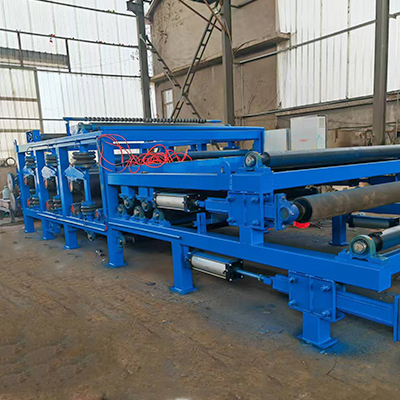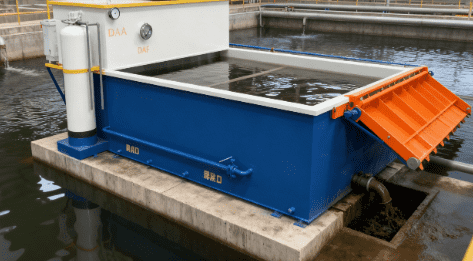Welcome to My Blog! 🌟
I’m so glad you’re here! Before we jump into the exciting content, I’d love for you to connect with me on my social media platforms. It’s where I share extra insights, interact with our amazing community, and post regular updates. Here’s how you can join the conversation:
📘 Facebook: Follow me on Facebook for more updates
Now, let’s dive into the journey ahead. I hope you find everything here both engaging and valuable. Together, let’s explore, learn, and grow! 🚀
Table of Contents
Introduction
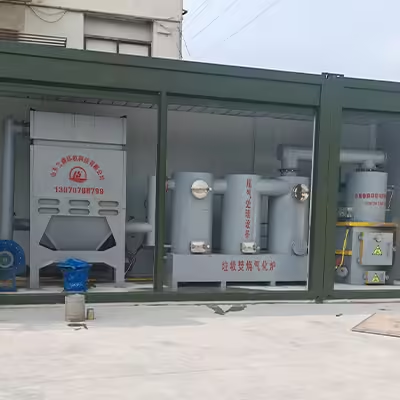
Heavy incinerators play an indispensable role in modern industrial waste management systems, where large-scale, high-temperature combustion is used to reduce waste volume and neutralize hazardous substances. These machines are designed to operate continuously under demanding conditions, processing a variety of materials from municipal solid waste to industrial by-products. Their operational efficiency directly affects cost control, regulatory compliance, environmental footprint, and overall plant performance.
However, despite the importance of heavy incinerators, many facilities continue to suffer from operational inefficiencies. These inefficiencies are often caused by avoidable mistakes in design, operation, and maintenance. In this article, we will delve into four critical mistakes that harm heavy incinerator efficiency. Understanding and correcting these issues can lead to substantial improvements in energy consumption, emissions control, and equipment longevity.
Mistake 1: Improper Fuel Selection for Heavy Incinerator Operation
Why Fuel Selection Matters
The fuel choice for a heavy incinerator goes far beyond simply providing the energy needed to maintain combustion. It fundamentally impacts the entire combustion process, affecting flame temperature, combustion completeness, emission profiles, and the longevity of critical components such as burners and refractory linings.
Heavy incinerators typically operate on a variety of fuels—natural gas, diesel, fuel oil, and even waste-derived fuels like refuse-derived fuel (RDF) or biogas. Each fuel differs not only in its calorific value (energy content per unit volume or mass) but also in flame characteristics and combustion byproducts.
For example, natural gas generally burns cleaner with fewer particulates but may have a lower flame temperature compared to diesel. Fuel oil, on the other hand, can generate higher heat but often produces more sulfur oxides (SOx) and particulate matter unless treated or blended properly.
Choosing a fuel with excessive moisture content is particularly detrimental. Moisture absorbs heat during combustion, lowering flame temperature and leading to incomplete combustion. This creates higher concentrations of carbon monoxide (CO), unburnt hydrocarbons, and soot, which can foul downstream equipment like heat exchangers and filters.
Impact of Poor Fuel Choice
- Reduced Combustion Temperature: Inadequate heat generation affects complete oxidation of waste material.
- Increased Emissions: Higher levels of toxic gases and particulates, risking non-compliance with environmental standards.
- Higher Operational Costs: Excess fuel consumption due to inefficient burning and additional cleaning or maintenance needs.
Best Practices in Fuel Selection
- Analyze fuel composition and calorific value regularly.
- Consider blending fuels to optimize combustion.
- Adapt fuel choice based on waste type and incinerator design.
- Explore alternative fuels such as biomass-derived gases or syngas when feasible.
Mistake 2: Neglecting Regular Maintenance and Inspection of Heavy Incinerators
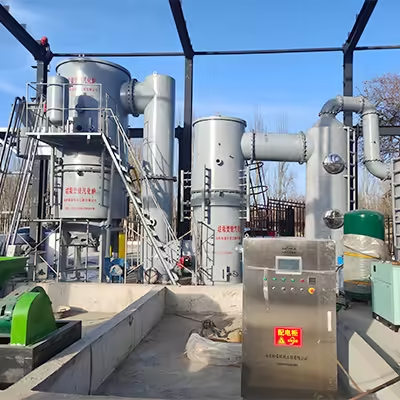
The Role of Maintenance in Sustaining Efficiency
Maintenance is the backbone of efficient heavy incinerator operation. These machines endure extreme heat, corrosive environments, and mechanical stresses daily, making them susceptible to wear, fouling, and component failure.
Regular inspections target critical components such as burner nozzles, refractory linings, ash handling systems, and exhaust stacks. Ignoring maintenance allows deposits to build up, refractory cracks to propagate, and sensors to malfunction—all of which impair combustion control and increase emissions.
Critical Components Requiring Attention
- Burner Nozzles: Burners must deliver fuel and air in the correct proportions with uniform mixing to ensure complete combustion. Deposits, corrosion, or mechanical damage cause poor flame shape and instability.
- Refractory Linings: These ceramic or castable materials protect the metal shell from heat and chemical attack. Cracks or spalling reduce thermal insulation, cause heat loss, and may expose structural steel to damage.
- Ash Handling Systems: Blockages or wear in ash conveyors and removal devices can lead to accumulation inside the combustion chamber, disrupting airflow and heat transfer.
- Exhaust Stacks and Filters: Soot buildup and corrosion reduce gas flow and increase emissions. Monitoring stack integrity and filter efficiency is essential.
Common Maintenance Pitfalls and Their Effects
- Overlooking Burner Performance: A misaligned or clogged burner wastes fuel and creates hotspots or cold zones in the combustion chamber, reducing overall efficiency.
- Delaying Refractory Repairs: Small cracks grow over time, leading to refractory failure, increased heat loss, and potentially catastrophic damage to the incinerator structure.
- Ignoring Sensor Calibration: Sensors measuring oxygen, temperature, and pressure provide critical feedback for combustion control. Faulty or uncalibrated sensors cause incorrect adjustments, driving inefficiency.
Recommended Maintenance Schedule
- Monthly: Visual inspection of burners, refractory surfaces, and ash systems. Cleaning soot deposits and minor repairs.
- Quarterly: Calibrating oxygen sensors, thermocouples, and flow meters. Checking burner nozzle wear and replacing parts if necessary.
- Annually: Comprehensive refractory lining inspections using thermal imaging or manual inspection, detailed mechanical checks, and performance audits.
- Record-Keeping: Maintain logs of all inspections and repairs to detect wear trends and schedule proactive maintenance.
Scheduled Maintenance Recommendations
- Monthly visual inspections and cleaning.
- Quarterly burner and sensor calibration.
- Annual refractory inspection and repair.
- Documentation of maintenance activities for trend analysis.
Mistake 3: Inefficient Waste Feed Practices in Heavy Incinerator Usage
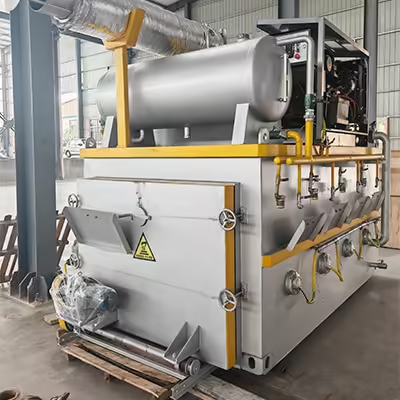
Waste Feeding’s Effect on Combustion Efficiency
How waste enters the heavy incinerator‘s combustion chamber significantly influences the combustion process. Proper feeding ensures that the waste material burns completely at an optimal rate.
Poor waste feeding habits, such as batch overloading or inconsistent input, disrupt flame stability and cause temperature fluctuations. This leads to increased unburnt residues and higher fuel consumption to compensate for uneven combustion.
Types of Feeding Errors
- Sudden large volume dumps that cool down the combustion zone.
- Feeding waste with excessive moisture or inappropriate size distribution.
- Irregular feeding intervals that complicate temperature control.
Strategies for Optimal Waste Feeding
- Implement mechanical feed systems like screw conveyors or feed hoppers for controlled input.
- Pre-treat waste to reduce moisture and standardize particle size.
- Monitor feed rate and adjust in real time based on temperature and emission feedback.
Heavy Incinerator Efficiency Comparison Table
| Operational Factor | Optimal Practice | Negative Impact of Mistake |
|---|---|---|
| Fuel Quality | High-calorific, consistent fuels | Incomplete combustion, increased emissions |
| Maintenance Schedule | Frequent, documented inspections | Component wear, reduced thermal efficiency |
| Waste Feed Control | Steady, pre-treated feedstock | Temperature fluctuations, unburnt waste |
| Temperature Management | Continuous monitoring, automated control | Combustion instability, energy waste |
| Emission Controls | Regular calibration and maintenance | Non-compliance, higher pollutant release |
This table highlights key factors influencing heavy incinerator efficiency, showing the stark contrast between best practices and common mistakes.
Mistake 4: Ignoring Real-Time Monitoring and Automation Technologies
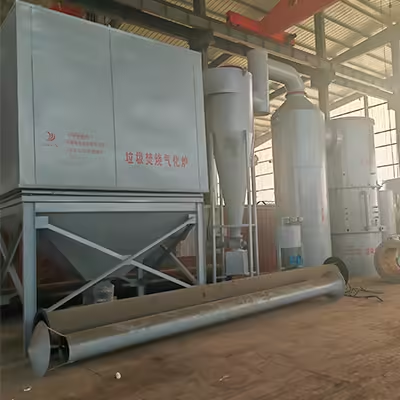
Importance of Monitoring and Automation
With advancements in industrial technology, real-time monitoring and automation have become essential for heavy incinerator optimization. These systems allow operators to observe combustion parameters, fuel consumption, and emissions continuously, enabling quick adjustments to maintain peak performance.
Facilities that fail to adopt these technologies often face unstable combustion, energy waste, and higher maintenance costs. Automated controls can modulate fuel feed, air supply, and waste input dynamically, reducing human error and improving process consistency.
Benefits of Automation
- Enhanced process stability through precise control.
- Early detection of faults and preventive maintenance triggers.
- Compliance with stringent environmental regulations through continuous emissions monitoring.
Implementation Considerations
- Invest in robust sensor technology (oxygen analyzers, thermocouples).
- Integrate with plant-wide control systems for centralized management.
- Train operators on interpreting real-time data and responding effectively.
Conclusion
In conclusion, avoiding these four heavy incinerator mistakes is critical for improving operational efficiency and ensuring sustainable waste management. Proper fuel selection, diligent maintenance, efficient waste feeding, and embracing automation technology collectively contribute to enhanced combustion, reduced emissions, and lower operating costs.
By investing in these areas, industries can extend equipment lifespan, achieve regulatory compliance, and support environmental stewardship. The future of heavy incinerator operations lies in combining traditional best practices with modern technological innovation.
FAQ
How can fuel quality be consistently ensured for heavy incinerators?
Regular fuel testing and sourcing from reliable suppliers help maintain fuel consistency. Blending fuels to meet calorific requirements also supports stable operation.
What are the signs that maintenance is overdue on a heavy incinerator?
Indicators include unusual smoke, fluctuations in temperature, increased fuel consumption, and visible wear on refractory lining or burners.
Can automation retrofit existing heavy incinerators?
Yes, many systems allow for retrofitting sensors and control units to older incinerators, significantly improving efficiency without full equipment replacement.
What waste characteristics should be considered for feeding?
Moisture content, particle size, and chemical composition affect combustion and should be monitored to optimize feed practices.




